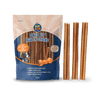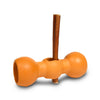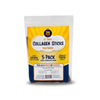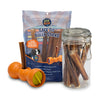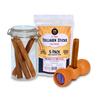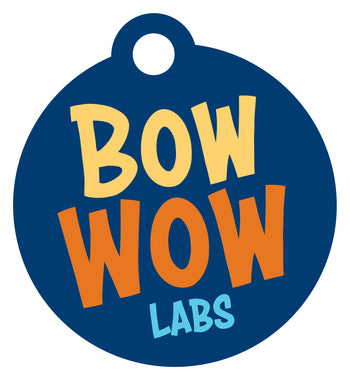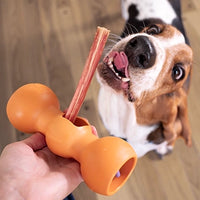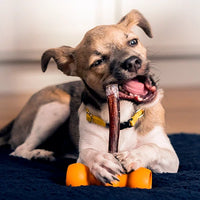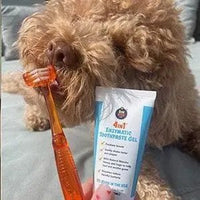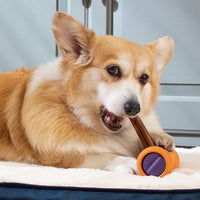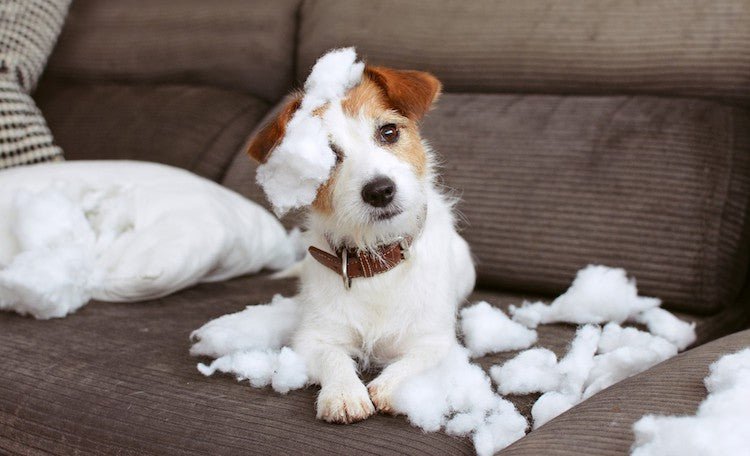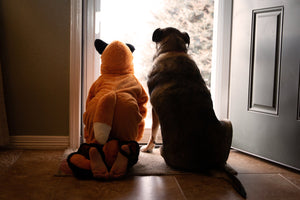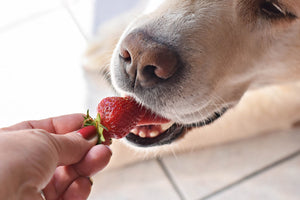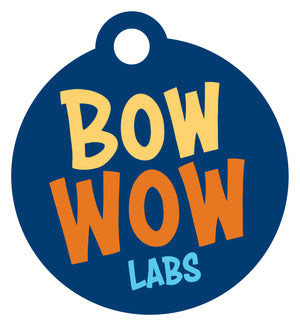
No doubt about it, dogs and puppies looooove to chew - they're hardwired for it. While the instinct to chew is totally natural, our furry friends can easily develop both good and bad chewing behavior. Fortunately, you can do a lot to encourage the good kind.
Good chewing happens when your pup is calm and cared for, and has the right kind of safe chew objects or treats available to him when he needs it.
Bad chewing, on the other hand, usually occurs when your pup is scared, overly hungry or in extreme pain from teething.
Here’s what you should know about your dog’s love of chewing and how to control it.

Why do dogs like to chew?
There are three main reasons why dogs love to chew:
1. Exploration: Chewing is a way for dogs to explore a new environment. Puppies, and dogs who have been recently adopted, are especially inclined to chew on things they maybe shouldn’t - at first anyway. Getting acquainted with a new setting through their mouths is as normal as you eating something to taste it, or touching something to feel it.
2. Self-Care: For puppies, chewing is an instinctive way to relieve the pain of new teeth popping up through their gums. For older dogs, it’s how they keep their jaws strong and their teeth healthy.
3. Entertainment: Most of the time, dogs chew to combat boredom and relieve mild anxiety or frustration, all of which can be healthy forms of entertainment and distraction as long as the chewing is limited to appropriate objects - much like us humans squeezing a stress relieving ball while sitting in traffic! Also, chewing can be just plain fun, and yummy, especially when a chew treat is involved.

What causes ‘bad’ or destructive chewing?
Bad chewing by your dog can be defined as chewing that leads to the destruction of objects around your home including pillows, clothes, table legs, books ... you name it. This kind of destructive chewing behavior is typically linked to other problems your dog might be experiencing such as:
Separation Anxiety
Does your pup only chew objects to the point of destruction when he or she is left alone? If so, your pup is likely experiencing some sort of separation anxiety. This anxiety is manifesting itself in the form of chewing on anything and everything that is available as a way to relieve the stress of being alone. To resolve this issue, start by leaving your pup alone for shorter periods of time in a crate with their favorite toy or treat. This will help him associate you being gone with a happy place filled with his most prized possessions.
Sometimes having too much room to roam around is overwhelming for a small puppy or dog in a new home. By providing her with a safe place that is warm with appropriate chew objects, she will learn that she is safe while you are gone.
Hunger
Pups that are on calorie-restricted diets might chew on objects in an effort to try and alleviate their hunger. Have you ever had a sudden feeling of frustration when you haven’t had enough to eat or are trying to stick to your summer diet? Hangry is the word that comes to mind and it can happen to dogs too.
This is not to suggest that a calorie-restricted diet is bad for him. You and your pup’s vet know best. Just be aware of any chewing behavior changes when your pup is on a diet. He might start to think that your throw pillow looks like a giant hot dog - it could be the hunger talking.
Puppy Teething
The first six months with your puppy can be extremely eye-opening as you realize just how much stuff you have laying around your apartment that looks like a fantastic teething toy. Try giving your pup ice cubes, frozen wet washcloths or frozen chew treats to help numb their gums while they go through this painful period. Your house will thank you!

Encouraging normal chewing behavior
Chewing behavior is fun for dogs and can enhance brain stimulation, it promotes strong jaws and healthy teeth, the trick is just making sure that your dog is chewing on appropriate items. Here are some tips for encouraging healthy chewing behavior:
Dog-proof your house
Remove all items from your dogs chew gaze that you don’t want destroyed. This may add five extra minutes to your morning routine to make sure nothing is left on the floor or couch, but it’s worth it. This strategy sets your dog up for success and ensures that you won’t experience double frustration by kicking yourself for leaving items in the chew zone.
Healthy chew options for your pup
Our recommendation is to offer edible chew treats or bones like bully sticks. Not only are they long lasting, but they are an excellent source of protein without all the extra additives and chemicals that are found in a lot of other bones. When paired with a Bow Wow Buddy™ bully stick holder safety device, you can prevent your pup from choking on the last two inches or so of the stick after they chew it down.
Rotate your dog’s chew toys and treats, ideally, every couple of days so that they don’t get bored and start to develop destructive chewing behavior with the chew toy itself.
Set your dog up for chew success
It’s important to correct destructive chewing behavior when you see it happening. If your dog starts to chew on an object that is not supposed to be chewed on, take it away but offer something else in return. This lets the dog know that chewing is not allowed with the item you took, but is allowed with the item you gave them. Praise them when they start to chew on appropriate items so that they associate the urge to chew with the appropriate items.
The best way to curb bad chewing behavior is to make sure the rest of your dog’s life is well balanced. Plenty of exercise and a healthy diet can alleviate some of the causes of destructive chewing and influence positive chewing behavior.
Related Resources
What to Do If Your Dog is Choking - How to Recognize the Signs and Perform the Heimlich Maneuver
Bully Stick Best Practices: Why does matching your dog’s weight with the right-sized bully stick matter?
5 Tips for Mastering Dog Ownership


